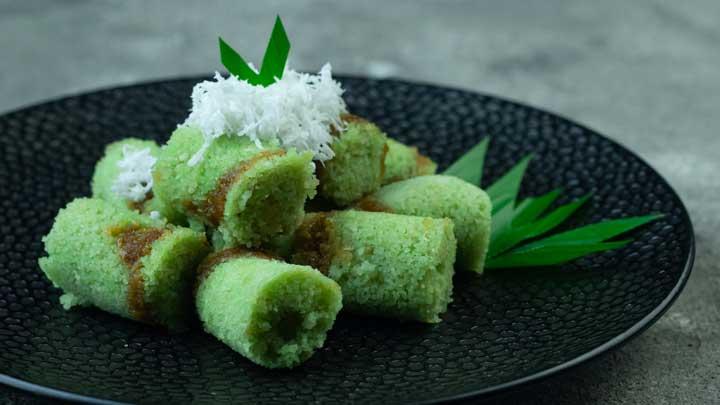Kushiyaki is a traditional Japanese dish that features a variety of skewered and grilled meats, vegetables, and even seafood, offering a delightful combination of flavors and textures. Often enjoyed as a casual meal or as part of a social gathering, Kushiyaki is an essential element of Japanese cuisine, especially in izakayas (Japanese pubs) and street food stalls. The simplicity of skewering ingredients and grilling them over open flames results in a dish that is both comforting and delicious.
In this article, we will explore the origins of Kushiyaki, its different variations, and how to enjoy this iconic dish. Whether you’re dining at a local izakaya in Japan or preparing it at home, Kushiyaki offers a deliciously satisfying experience.
The Origins of Kushiyaki
The term “Kushiyaki” (串焼き) comes from the Japanese words “kushi”, meaning “skewer,” and “yaki”, meaning “grilled” or “to cook.” It is a style of cooking that dates back to ancient Japan culinary, when meat and vegetables were threaded onto sticks and cooked over an open flame. Kushiyaki can be traced to early Japanese cooking traditions, where grilling meat and vegetables over an open flame was a popular method of preparing food.
Historically, Kushiyaki was a simple and portable food, popular among farmers and laborers who needed quick, hearty meals. Over time, it evolved into a popular street food, often served alongside drinks in informal settings like izakayas or food stalls known as yatai. Today, Kushiyaki is enjoyed by people of all ages and backgrounds, from casual diners to those seeking gourmet interpretations of the dish.
Key Ingredients in Kushiyaki
Kushiyaki can feature a wide variety of ingredients, but the most common options include meat, vegetables, and sometimes seafood. The skewers are typically grilled over binchotan charcoal, a type of white charcoal that provides a clean, smokeless flame and imparts a subtle smokiness to the food.
1. Meats:
- Chicken (Tori): Chicken is one of the most popular ingredients in Kushiyaki. Common cuts include thighs, breasts, and wings. One of the most well-known skewers is Yakitori, which focuses on various cuts of chicken, such as tsukune (minced chicken), momo (thigh), and negi-mayo (chicken and green onions).
- Pork (Buta): Pork skewers are also common, often including belly, loin, or fatty cuts. Pork can be seasoned simply with salt or coated in a tangy sauce.
- Beef (Gyu): Beef skewers tend to feature tender cuts like sirloin or beef tongue, often marinated in soy sauce and grilled to a perfect sear.
2. Vegetables:
- Shiitake Mushrooms: These earthy mushrooms are a favorite in Kushiyaki, often grilled whole or sliced into thick pieces.
- Bell Peppers: Colorful and sweet bell peppers are a staple in vegetable skewers, offering a slight char and sweetness when grilled.
- Onions: Shallots and green onions (negi) are often used to add a bit of sharpness and bite.
- Eggplant: Grilled eggplant, with its smoky flavor, adds a rich, savory component to vegetable skewers.
- Asparagus: Asparagus is another popular vegetable, often lightly seasoned and grilled to maintain its crispness.
3. Seafood:
- Shrimp: Skewered shrimp can be brushed with a savory marinade or simply seasoned with salt.
- Fish: Fish like salmon, sardines, or mackerel can be used in Kushiyaki, often cooked with a slight char for added flavor.
The Cooking Method: Grilling Over Charcoal
The secret to great Kushiyaki lies in the method of cooking. It is typically grilled over binchotan charcoal, which burns hotter and cleaner than regular charcoal, making it ideal for grilling skewered ingredients. The high heat ensures that the skewers cook quickly and evenly while retaining the natural flavors of the ingredients.
-
Grilling Technique: Skewers are arranged on a grill and turned regularly to ensure even cooking. The goal is to achieve a crispy exterior with a juicy and tender interior. The grilling process also imparts a smoky, savory flavor that makes Kushiyaki so appealing.
-
Seasoning: Kushiyaki is typically seasoned in one of two ways:
- Shio (salt): A simple and traditional seasoning method that enhances the natural flavors of the ingredients without overpowering them.
- Tare (sauce): A rich, sweet-savory sauce made with soy sauce, mirin, sake, and sugar. It’s brushed on the skewers as they grill or after cooking for added flavor. This sauce is typically used for yakitori (chicken skewers) or pork skewers.
Popular Types of Kushiyaki Skewers
Here are some of the most popular types of skewers you’ll find when enjoying Kushiyaki in Japan:
-
Yakitori (焼き鳥): The most famous variety, made with different cuts of chicken. Yakitori includes skewers of chicken thighs (momo), chicken breast (mune), chicken liver (reba), and tsukune (minced chicken). It’s often served with tare sauce or simply seasoned with salt.
-
Kushikatsu (串カツ): Another popular type of skewer, particularly in the Kansai region. These skewers are breaded and deep-fried instead of grilled, offering a crispy texture.
-
Gyu Kushi (牛串): These skewers are made with beef, often cooked with tare sauce and seasoned with a variety of herbs and spices.
-
Ebi Kushi (エビ串): Shrimp skewers are grilled with salt or tare sauce, offering a delicate, slightly sweet flavor.
-
Yasai Kushi (野菜串): These are vegetable skewers that often include mushrooms, peppers, eggplant, and asparagus. They can be grilled with salt or tare sauce.
Pairing Kushiyaki with Drinks
Kushiyaki is typically enjoyed with a refreshing drink, and the combination of smoky flavors with beverages adds to the enjoyment of the meal. Some common drink pairings include:
- Sake: This traditional Japanese rice wine complements the smoky, savory flavors of Kushiyaki, especially when paired with grilled chicken or pork skewers.
- Beer: Japanese beers, such as Asahi, Sapporo, or Kirin, are commonly served with Kushiyaki. The cold, crisp beer provides a refreshing contrast to the rich flavors of the grilled food.
- Shochu: This Japanese distilled spirit, often made from barley or sweet potatoes, is another popular choice. It’s typically served with water or on the rocks, and its strong, earthy flavor pairs well with the grilled meats and vegetables.
How to Make Kushiyaki at Home
While enjoying Kushiyaki at an izakaya is a fantastic experience, you can also try making this delicious dish at home. Here’s how:
-
Ingredients: Start with your choice of meats, vegetables, and seafood. If you’re using chicken, make sure to cut it into bite-sized pieces. For vegetables, cut them into chunks that will skewer easily.
-
Skewering: Thread the meat and vegetables onto wooden or metal skewers. Be sure not to overcrowd the skewers so the ingredients cook evenly.
-
Grilling: If you have access to a charcoal grill, that’s ideal for achieving the authentic smoky flavor. If not, you can use a grill pan or broiler. Grill the skewers over high heat, turning frequently to ensure they are evenly cooked.
-
Seasoning: For shio, simply season with salt during grilling. For tare, you can make a simple sauce by combining soy sauce, sake, mirin, and sugar, then brush it onto the skewers in the last minute of grilling.
-
Serving: Serve the hot skewers immediately with your choice of sides, such as pickled vegetables, rice, or salad.
Conclusion
Kushiyaki is a delightful, versatile dish that offers a taste of Japan’s rich grilling tradition. From Yakitori to vegetable skewers, this dish is perfect for casual dining or an intimate gathering. The yowestogel simplicity of skewering ingredients and grilling them over an open flame brings out the natural flavors, while the versatility of the ingredients allows for endless variations.
Whether you’re in Japan enjoying Kushiyaki at a bustling izakaya or grilling at home with friends, this beloved dish offers a flavorful, fun dining experience that brings people together over great food and drinks.





















